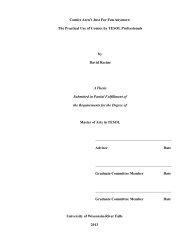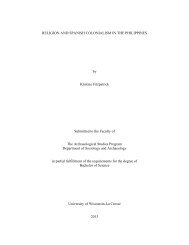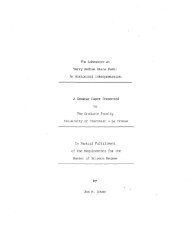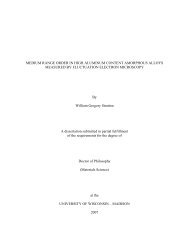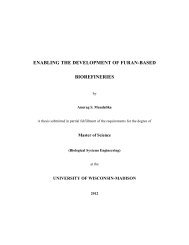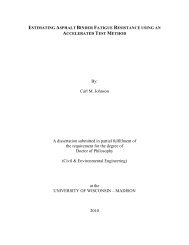The effectiveness of eye movement desensitization and reprocessing
The effectiveness of eye movement desensitization and reprocessing
The effectiveness of eye movement desensitization and reprocessing
Create successful ePaper yourself
Turn your PDF publications into a flip-book with our unique Google optimized e-Paper software.
Eye Movement 16<br />
“EMDR is a treatment that resolves long-st<strong>and</strong>ing traumatic memories within a few<br />
treatment sessions. During EMDR treatment, the client is asked to hold in mind an image<br />
<strong>of</strong> the trauma, a negative self-cognition, negative emotions, <strong>and</strong> related physical<br />
sensations about the trauma. While doing so, the client is instructed to move his or her<br />
<strong>eye</strong>s quickly <strong>and</strong> laterally back <strong>and</strong> forth for about 15 to 20 times following the<br />
therapist’s finger. <strong>The</strong> client then reports the images, cognitions, emotions, <strong>and</strong> physical<br />
sensations that emerged. This recursive procedure continues until <strong>desensitization</strong> <strong>of</strong><br />
troubling material is complete <strong>and</strong> positive self-cognitions have replaced the previous<br />
negative self-cognition”(Shapiro, 1995, p. 55).<br />
<strong>The</strong>oretical Framework<br />
In the following paragraphs an examination <strong>of</strong> the theories that underlie EMDR’s<br />
treatment effects are examined. For the most part, these theories have come about after the fact<br />
<strong>and</strong> have not been proven or disproven as reasonable explanations for these treatment effects.<br />
<strong>The</strong> physiology <strong>of</strong> the brain leaves much to the unknown. <strong>The</strong>refore, it is difficult to confirm the<br />
theories that are thought to underlie EMDR.<br />
One factor that gives creditability to EMDR is that there may be a biological basis for<br />
why it works. Eye <strong>movement</strong>s used in the procedure are similar to those that occur naturally<br />
during dream states. It is believed that one <strong>of</strong> the functions <strong>of</strong> dreaming is to integrate<br />
incomplete or unfinished experiences from the preceding day (week or month)—that is,<br />
experiences not fully thought through <strong>and</strong> assimilated at the time <strong>of</strong> occurrence. In the same<br />
manner, EMDR seems to allow the brain to access <strong>and</strong> reprocess “unfinished business” from past<br />
traumatic events (Shapiro, Forrest, 1997).



